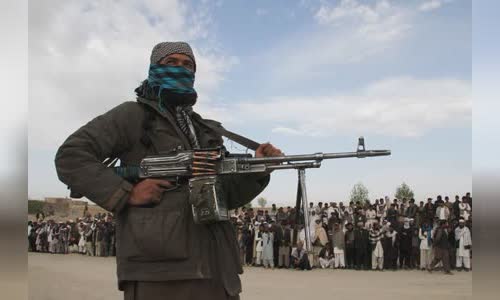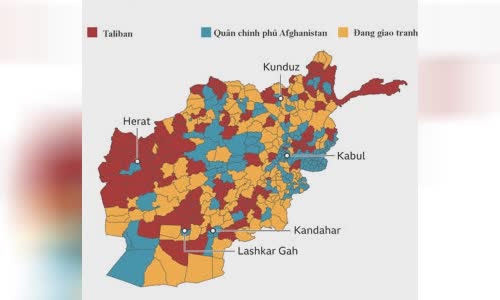After the period of dominating Afghanistan 1995 - 2001, the Taliban was overturned by the US, but now it is returning and regaining the area from the government.
In the past few weeks, the Taliban is rising back in Afghanistan, accounting for many districts from the government force after the US withdraws the troops from the country.

Photo: Reuters
A Taliban member in Ghazni, Afghanistan in April 2015.
Taliban originated from Afghanistan's Mujahedeen Muslim rebel groups in the 1980s. These rebel groups were a series of powers, including the US, sponsoring and equipping weapons against the Soviet forces present.
In 1989, when the Soviet Union pulled the army, the Afghan government was backwarded by Moskva and was overthrown by Moskva and was overthrown in 1992. Soon after, Mujahedeen groups fought each other to fight for power in the new government
As a group of orthodox Islamicism with the majority of Pashtun ethnic groups, the Taliban was supposed to have appeared for the first time in the Anonymous Islamic Christian teaching organizations funded by Arab Saudi in North Pakistan
In 1994, the Taliban began military campaign from South Afghanistan.
For Afghan people who are too depressed war, the Taliban's promise that they will bring security, order and corruption is very attractive.
In 1999, under the leadership of the Taliban, no Afghan girl was studied in high school and only 4% of 9,000 girls in elementary school age were going to school.
After a terrorist attack on September 11, 2001, the US asked Taliban to hand over Osama bin Laden and expelled Al-Qaeda members from Afghanistan.
The US and the Coalition conducted a sustainable Freedom Military Campaign in Afghanistan from October 7, 2001.
After being defeated, many Taliban's senior members have escaped and are said to have refuge in Quetta, Pakistan.
The Taliban reorganized in 2004 and began a bloody uprising against the new Afghan government and the foreign military supported them.
There are many reasons that can explain the rise of the Taliban, including the Afghan authorities in Kabul corruption and lack of capacity, strategies, negative impacts of foreign military campaigns, daily dependencies

Photo: BBC
The United States has set up an agreement with the Taliban and is withdrawing troops from Afghanistan, posing an existing threat to fragile political order after 2001, which has been shaped, sponsored and protected largely in cash and
The agreement between the US and the Taliban made some optimism about the ability to end the prolonged battle with a political solution and reduced the possibility of Afghanistan again to become a shelter for terrorists.
Afghan control forces.
Now, the Taliban is playing the victory drums and seems to prepare to re-establish the US government and the overthrown from 20 years ago.
Taliban's current area is around traditional strongholds in the south and southwestern country, including North Helmand, Kandahar, Uruzgan and Zabul, hills in South Faryab in the Northwest and Badakhshan Mountains in the East region
Afghan authorities are forced to abandon some districts when they cannot withstand pressure from the Taliban.
The Afghan Government's force mainly holds cities and districts in plains or river valleys, where most population lives.
The Afghan government said it sent a reinforcement troops to all major cities that were threatened by the Taliban and imposed the nightly command to last for the whole month across the country, to prevent the Taliban from entering cities.
Although the Taliban seems to be concentrating forces in central areas such as Herat and Kandahar, they cannot win any big urban area.
The US warned that they would not recognize the Taliban government in Kabul if they occupy Kabul by force.
If the Taliban took over the government with military measures, it didn't mean wars ended in Afghanistan.
Different benefits of countries in the region can promote the increasing gravity of local people for the Taliban, as each occurred in the late 1990s, so can extend the pool



 Nadine Dauphin-Simmons
Nadine Dauphin-Simmons







